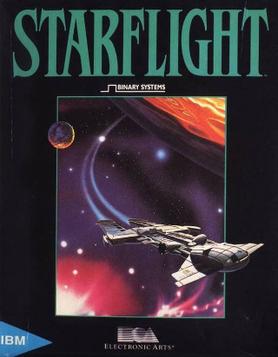
Starflight is a space exploration, combat, and trading role-playing video game created by Binary Systems and published by Electronic Arts in 1986. Originally developed for IBM PC compatibles, it was later ported to the Amiga, Atari ST, Macintosh, and Commodore 64. A fully revamped version of the game was released for the Sega Genesis in 1991.
The concept of self-replicating spacecraft, as envisioned by mathematician John von Neumann, has been described by futurists and has been discussed across a wide breadth of hard science fiction novels and stories. Self-replicating probes are sometimes referred to as von Neumann probes. Self-replicating spacecraft would in some ways either mimic or echo the features of living organisms or viruses.

Stargate is a horizontally scrolling shooter released as an arcade video game in 1981 by Williams Electronics. Created by Eugene Jarvis and Larry DeMar, it is a sequel to Defender which was released earlier in the year. It was the first of only three productions from Vid Kidz, an independent development house formed by Jarvis and DeMar. Some home ports of Stargate were renamed to Defender II for legal reasons.
AdventureQuest is an online Flash-based single-player role-playing video game started in 2002 and currently developed by Artix Entertainment.

Star Trek is a text-based strategy video game based on the Star Trek television series (1966–69) and originally released in 1971. In the game, the player commands the USS Enterprise on a mission to hunt down and destroy an invading fleet of Klingon warships. The player travels through the 64 quadrants of the galaxy to attack enemy ships with phasers and photon torpedoes in turn-based battles and refuel at starbases. The goal is to eliminate all enemies within a random time limit.

Tyrian is a vertically scrolling shooter developed by Eclipse Software for MS-DOS and published in 1995 by Epic MegaGames. Tyrian was programmed by Jason Emery, illustrated by Daniel Cook, and its music composed by Alexander Brandon and Andras Molnar. The game was re-released as freeware in 2004. A free and open-source port of the game started in April 2007.

Anacreon: Reconstruction 4021 is a video game written by George Moromisato for MS-DOS and published by Thinking Machine Associates in 1987. Anacreon is a turn-based game in which human and computer players explore the galaxy, conquering worlds and putting them to use to fuel their war machines. The game resembles Stellar Conquest and Hamurabi. It was inspired by Isaac Asimov's Foundation series of novels.

Vendetta Online is a twitch-based, science fiction massively multiplayer online role-playing game (MMORPG) developed by Guild Software for the operating systems Android, Linux, Mac OS X, iOS, and Microsoft Windows. It uses the NAOS game engine, a fully real-time flight model and combat system, to offer first-person/third-person shooter-style player versus player and player versus environment battle action against the backdrop of a massively multiplayer universe. Vendetta Online shipped as a commercial MMORPG in November 2004 with a subscription-based business model, although it has been running continuously since April 2002. Vendetta Online is available to play across a wide array of platforms, including the Oculus Rift virtual reality display, allowing all users to directly interact in a single, contiguous galaxy. It is also notable for its twitch combat and fidelity to real physics.

Galactic Civilizations II: Dread Lords is a 4X turn-based strategy by Stardock for Microsoft Windows. It is the sequel to the 2003 game, Galactic Civilizations, and was released at retail and on Stardock's online subscription service, TotalGaming.net, on February 21, 2006. An expansion, Dark Avatar, was released in February 2007. A second expansion, Twilight of the Arnor, was released in April 2008.

Jets'n'Guns is a 2004 2D horizontally scrolling shooter for Microsoft Windows by Czech studio Rake in Grass. In April 2006, a version for Mac OS X was released. In December 2006 an expansion, Jets'n'Guns Gold, was released. A version for Linux has been developed by Linux Game Publishing. A sequel, Jets'n'Guns 2, was available in early access, and released on 25 July 2020.

The mythology of the Stargate franchise is a complex and eclectic fictional backstory, which is presented as being historical, of the Stargate premise. A "rich mythology and world-building" are used to establish "a vast cosmology and an interesting alternate take on the history of Earth"; a defining feature is "its use of ancient mythology, with stories that take inspiration from multiple places around the globe". Narratives center around xeno-mythology as experienced by humans during episodic contact with alien races. Audiences across a variety of platforms - including TV series, novels, comics and movies - witness the people of Earth exploring a fictional universe using the Stargate. Species established early on in the franchise recur throughout, with one adversary often dominating a particular story arc, which can continue across several seasons.
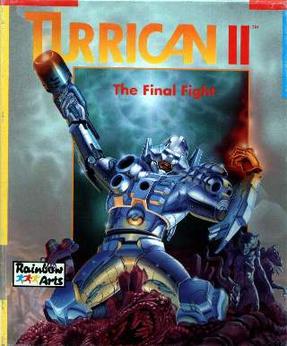
Turrican II: The Final Fight is the second game of the Turrican series. The game, developed by Factor 5 was released in 1991 for the Commodore Amiga. This version was finished before the C64 version, but Manfred Trenz cites the C64 version as the original design. Turrican II was also released for the CDTV, Atari ST, Amstrad CPC and ZX Spectrum, and later for DOS, and also for the Mega Drive/Genesis and Game Boy rebranded as Universal Soldier.
Starfire is a board wargame simulating space warfare and empire building in the 23rd century, created by Stephen V. Cole in 1979.

Blasteroids is the third official sequel to the 1979 multidirectional shooter video game, Asteroids. It was developed by Atari Games and released in arcades in 1987. Unlike the previous games, Blasteroids uses raster graphics instead of vector graphics, and has power-ups and a boss.

DarkStar One is a space trading and combat simulator game developed by German studio Ascaron and published by CDV.
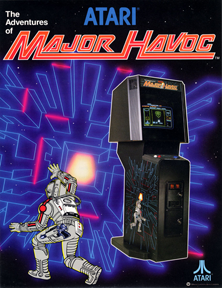
Major Havoc is an arcade action game released by Atari, Inc. in 1984. A vector-based upright arcade cabinet, Major Havoc consists of several smaller game experiences played in succession, including a fixed shooter, platform game, and a lunar lander sequence. It was developed by Owen Rubin with some levels designed and tuned by Mark Cerny, who joined the development team approximately a year into the game's development.

Kiloblaster is a fixed shooter video game trilogy written by Allen Pilgrim and published by Epic MegaGames in 1992 for IBM PC compatibles. Based on Namco's Galaxian from 1979, there are a few differences such as allowing greater player movement, much faster enemy movement, power-ups, enemies that take more than one hit, and allies to assist in battle.
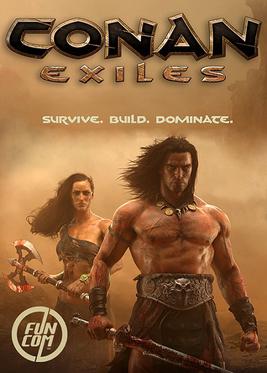
Conan Exiles is a survival video game developed and published by Funcom for PlayStation 4, Windows, and Xbox One. The game is set in the world of Conan the Barbarian, with the custom playable character being rescued by Conan, beginning their journey. Early access versions of the game were released in early 2017, leaving early access on 8 May 2018. An enhanced version of the game for Xbox Series X and Series S was released on 8 June 2021.

Galaxy On Fire 2 is a spaceflight simulation video game created and distributed by Fishlabs in 2009.
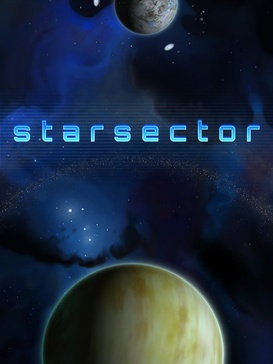
Starsector is a top-down single-player indie role-playing game developed and published by Fractal Softworks for PC, with the Alpha released in 2011. Set in the year 3126, the player commands a fleet of spaceships and engages in trade, exploration, and combat in a procedurally generated world.

















